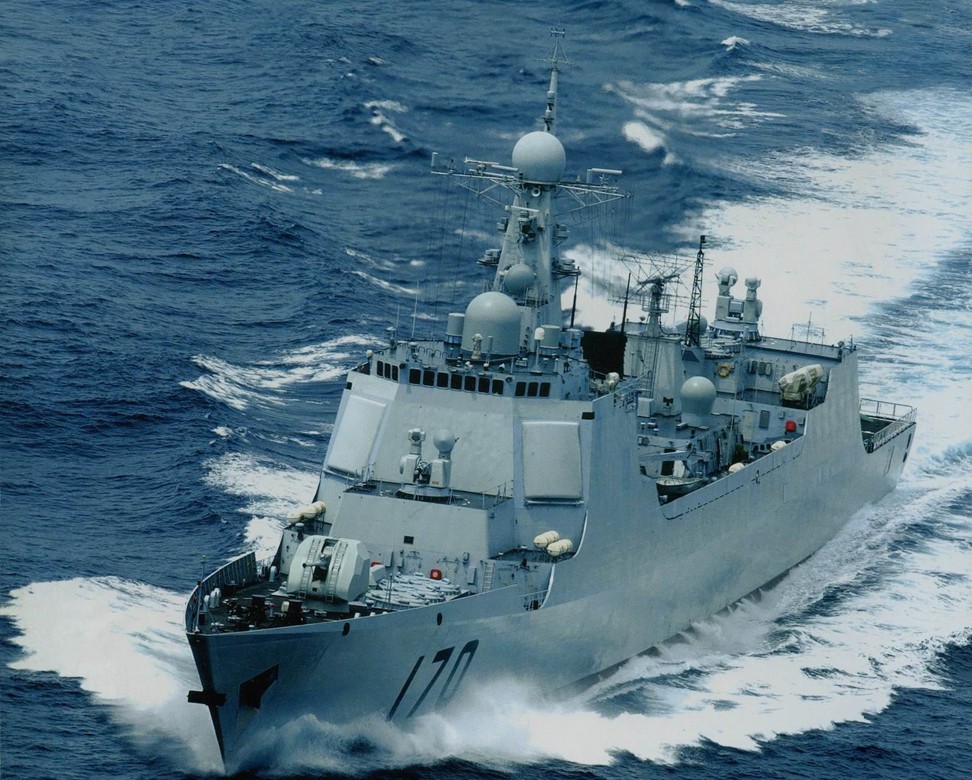
Chinese warship crew says ‘good morning’ to Japanese helicopter carrier sailors in South China Sea
- Radio message comes amid warming ties between Beijing and Tokyo, but analysts warn against overplaying its significance
The crew of a Chinese warship sent a friendly greeting to Japanese sailors aboard a helicopter carrier they encountered in the South China Sea recently in what analysts said was a further sign, albeit superficial, of the warming ties between the two Asian giants.
The incident happened late last month when China’s Luyang-II class guided-missile destroyer Lanzhou spotted the Japanese vessel Kaga, Japan’s state broadcaster NHK said on Friday.
On seeing the other ship, the crew of the Lanzhou sent a radio message saying, “Good morning, glad to see you”, the report said.
Beijing faces growing challenges to its South China Sea claims
The sentiment was in stark contrast to that of a message sent in August by the People’s Liberation Army – China’s military – to the crew of a US Navy P-8A Poseidon reconnaissance plane flying over the Spratly Islands in the disputed waterway, which said simply, “leave immediately”.
“The encounter implies that the overall warming in Sino-Japanese relations meant the two countries’ militaries could get along with each other,” said Song Zhongping, a military commentator for Hong Kong’s Phoenix Television.
“[But] the Chinese navy only sent the friendly message because the Japanese warship wasn’t in a sensitive area and was not being in any way provocative.”
Japan denies submarine drill in South China Sea is a warning to Beijing
Song said also that the frequent encounters between Chinese and Japanese warships in the South China Sea showed just how closely Beijing was watching the United States’ ally in the region.
The NHK report came just days after Japan’s Nippon News Network broadcast a documentary about the Kaga’s operations in the South China Sea in September, in which it was shown being monitored by the Hengshui, a Chinese guided missile frigate.
On that occasion, the two vessels only made radio contact to acknowledge one another’s presence.

Despite the improvement in relations between Beijing and Tokyo, and the “historic turning point” achieved by the visit to China of Japanese Prime Minister Shinzo Abe last month, naval expert Li Jie said the PLA Navy would continue to keep a close eye on Japanese military vessels in the region.
“It’s very clear that the current Sino-Japanese amity is happening amid the ongoing trade row between Beijing and Washington, and Abe might be using that to create a stronger bargaining position for himself with his American big brother,” he said.
“The thawing bilateral relationship between China and Japan was driven by Tokyo’s economic interests, not sincerity,” Li said. “Beijing understands that the [Japanese navy’s] military presence is intended as a show of its geopolitical significance in the Asia-Pacfic region.”
China, Japan moving from competition to cooperation, leaders say
While Beijing has territorial disputes with Taiwan, the Philippines, Vietnam, Brunei and Malaysia in the South China Sea, Japan is not a claimant in the disputed waters. The two countries do, however, have a long-standing territory dispute over the Senkaku Islands, or Diaoyu as they are known in China, in the East China Sea.
Nevertheless, Tokyo has been more active in the region of late, with the Kaga replicating tours of the South China Sea and Indian Ocean that were made by its sister ship Izumo in May 2017.


